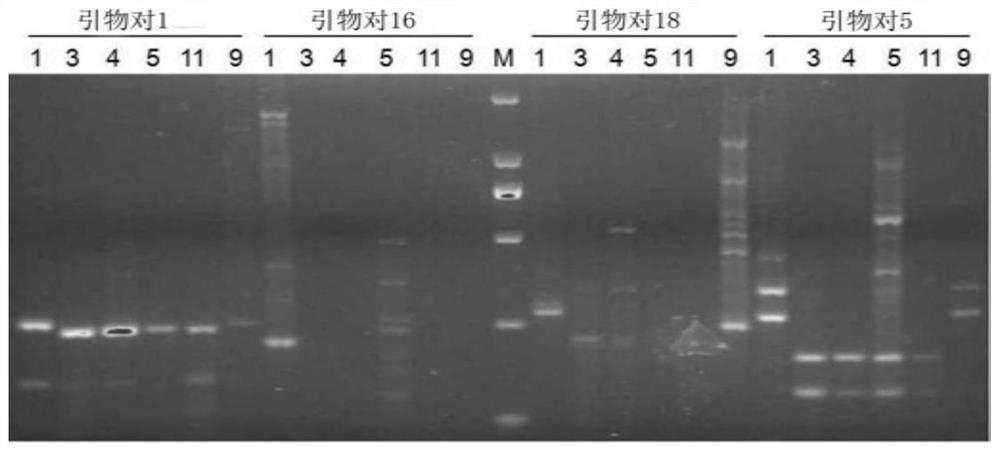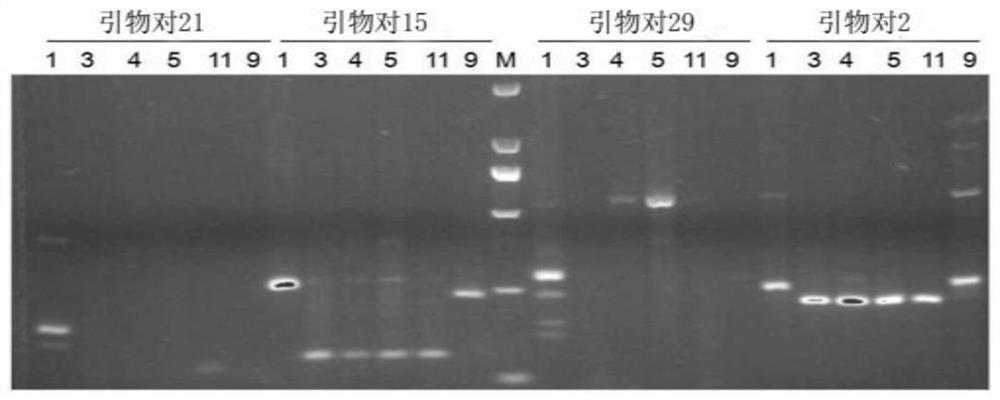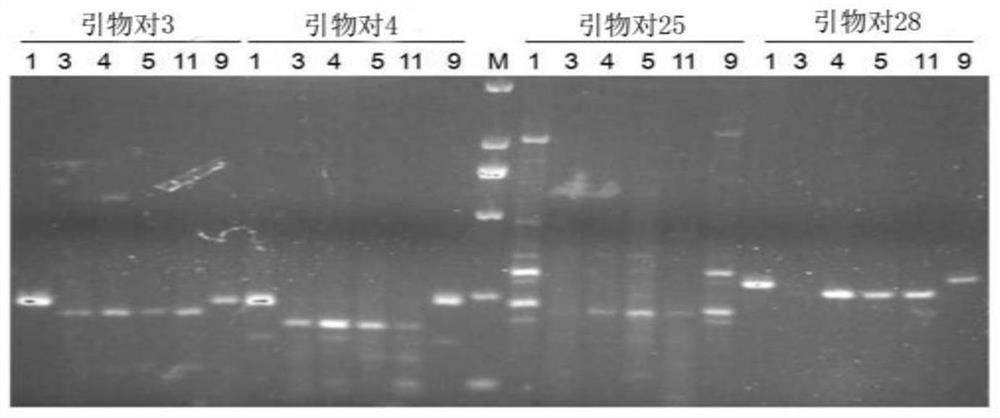The ssr primer pair of persimmon anthracnose based on the genome of related species and its application
An anthracnose bacteria and primer pair technology, applied in the biological field, can solve problems such as poor stability and strong randomness
- Summary
- Abstract
- Description
- Claims
- Application Information
AI Technical Summary
Problems solved by technology
Method used
Image
Examples
Embodiment 1
[0041] Embodiment 1: the acquisition of persimmon anthracnose bacteria
[0042] In 2014, the diseased leaves were collected from the main producing areas of persimmons, and the anthracnose fungus of persimmon tree was isolated by tissue separation method, and purified by isolation of single spores, and the fungus of anthracnose persimmon tree was obtained. The present invention has isolated 23 persimmon anthracnose bacteria (see Table 1).
[0043] The specific operation is as follows: collect the fallen persimmon leaves, cut off the small piece of diseased tissue (the junction of disease and health) of the leaves, put the diseased tissue into 75% alcohol for 2-3 seconds, remove it and put it into 5% sodium hypochlorite for sterilization 2-3 minutes (the branch tissue is large and rough, and it needs to be sterilized for 3-5 minutes to prevent contamination); then rinse with sterile water three times; use sterilized absorbent paper to absorb the moisture of the diseased tissue,...
Embodiment 2
[0047] Embodiment 2: the extraction of persimmon anthracnose bacteria DNA
[0048] The CTAB (cetyltrimethylammonium bromide) method was used to extract the genomic DNA of the persimmon anthracnose bacterium, and the specific operations were as follows:
[0049](1) Transfer the preserved persimmon anthracnose bacterial strain into liquid PDA and cultivate for 3 days, pick out the mycelium block and dry it with filter paper, put it into a mortar and add liquid nitrogen to grind it into powder, and obtain mycelium powder; Put 50mg of mycelium powder in a 1.5ml EP tube, add 900μl 2% CTAB (cetyltrimethylammonium bromide) extract and 90μl 10% SDS (sodium dodecylbenzenesulfonate), mix well and place Place in a water bath at 55-60°C for 1 hour; (2) Centrifuge at 12000rpm / min for 5min, take the supernatant, add an equal volume of phenol\chloroform\isoamyl alcohol (25:24:1) to extract once; (3) 12000rpm / Centrifuge for 5 min, absorb the supernatant, add an equal volume of chloroform to...
Embodiment 3
[0050] Example 3: Development of SSR primers
[0051] (1) Log in to the NCBI website, select the genome database, and search for the genome data of the anthracnose fungus, find the whole genome of Colletotrichum fructicola Nara gc5, a close relative of the persimmon anthracnose fungus, and download the whole genome of the fungus anthracnose fruit Data, including all scaffolds or contigs.
[0052] (2) Use MISA software to search for SSR sites on the whole genome sequence downloaded in step (1). The specific process is as follows: organize the genome data into FASTA format, download and install Perl language, and run the MISA program to identify and locate the genome sequence. For SSR, the parameters are set as follows: the number of repetitions of mononucleotides, dinucleotides, trinucleotides, tetranucleotides, pentanucleotides and hexanucleotides is at least 10, 6, 5, 5, 5 and 5; after SSR site search, a total of 1981 mononucleotide repeat sequences, 1146 dinucleotide repeat...
PUM
 Login to View More
Login to View More Abstract
Description
Claims
Application Information
 Login to View More
Login to View More - R&D
- Intellectual Property
- Life Sciences
- Materials
- Tech Scout
- Unparalleled Data Quality
- Higher Quality Content
- 60% Fewer Hallucinations
Browse by: Latest US Patents, China's latest patents, Technical Efficacy Thesaurus, Application Domain, Technology Topic, Popular Technical Reports.
© 2025 PatSnap. All rights reserved.Legal|Privacy policy|Modern Slavery Act Transparency Statement|Sitemap|About US| Contact US: help@patsnap.com



